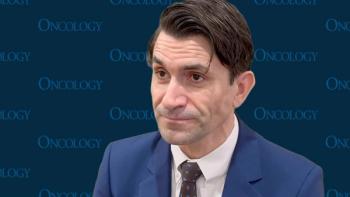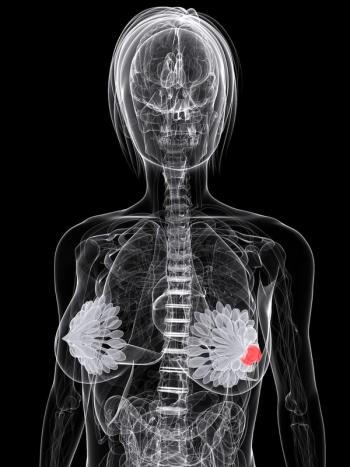
Oncology NEWS International
- Oncology NEWS International Vol 4 No 8
- Volume 4
- Issue 8
Local Recurrence Risk Low After Conservation
BALTIMORE--A review of randomized trials shows that local recurrence rates for breast-conserving therapy are comparable to those for mastectomy for early-stage patients, Irene Gage, MD, said at a conference sponsored by Johns Hopkins Medical Institutions.
BALTIMORE--A review of randomized trials shows that local recurrencerates for breast-conserving therapy are comparable to those formastectomy for early-stage patients, Irene Gage, MD, said at aconference sponsored by Johns Hopkins Medical Institutions.
Ipsilateral breast recurrence is seen in about 6% of breast-conservationpatients at 5 years and in about 9% at 10 years. Most of theseoccur in the same quadrant of the breast as the primary tumorsite. These true recurrences and marginal misses are observedin the early years after treatment, while recurrences elsewherein the same breast are more frequent between 5 and 10 years, saidDr. Gage, a radiation oncologist at the Johns Hopkins OncologyCenter.
The main risk of recurrence after breast-conserving therapy, sheemphasized, is distant failure.
"The risk of an ipsilateral breast recurrence remains fairlyconstant in the first decade following treatment, and thus patientsrequire continuous monitoring and mammography for years aftertheir initial treatment," she said.
Ipsilateral breast recurrence is accompanied by distant metastasesin a minority of cases, and most recurrences are operable. Salvagemastectomies produce 5-year survival rates ranging from 55% to85%, according to studies cited by Dr. Gage.
The increased risk of ipsilateral breast recurrence may be associatedwith treatment, pathology, and patient selection issues. For example,an extensive intra-ductal component is a pathologic feature associatedwith an increased risk of breast recurrence in some series. Otherpath-ologic factors like lymphatic vessel invasion may be important,but the literature is retrospective, controversial, and inconclusive,she said.
Treatment decisions such as degree of surgery may influence therecurrence rate, Dr. Gage said. Quadrantectomy or wide excisionof the primary tumor appears to result in fewer recurrences thanlumpectomy or gross excision.
Effects of radiation therapy are difficult to measure as independentfactors, since results of both the primary dose and any boostmay be affected by the adequacy of excision, she said. Finally,the use of chemotherapy or tamoxifen (Nolvadex) may produce aminor decrease in risk.
Better outcomes are associated with earlier detection and evidenceof smaller tumors in histologic exams. Possibly, a briefer timeto recurrence may indicate a poorer prognosis, she said.
Articles in this issue
over 30 years ago
CA 125 Predicts Response to Chemo in Ovarian Caover 30 years ago
Biochemical Modulation Promising in RT-Resistant GI Cancerover 30 years ago
Cancer Institute of NJ Adds to its Staffover 30 years ago
A Century of Breast Cancer Litigation Is 'Deconstructed'over 30 years ago
New Depot Formulation of LHRH Analogue Allows 12-Week Dosingover 30 years ago
NSABP Investigation Threatens Academic Freedom for All: Fisherover 30 years ago
Cancer Fax Directory in 3rd Editionover 30 years ago
HIV-Related Malignancies Increasing, Physicians Tell Panelover 30 years ago
Breast Cancer Risk Factors Remain Elusive TargetNewsletter
Stay up to date on recent advances in the multidisciplinary approach to cancer.
















































































